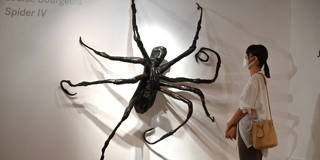The prevailing mood at this year’s Art Basel, the world’s most influential art fair, was one of anxiety and trepidation. After years of continuous and seemingly boundless growth, the art market appears to have reached a plateau, suggesting a decline in confidence among the world’s richest people.
ZURICH – Billionaires are not accustomed to waiting in line, especially not in scorching heat. But Art Basel, the world’s most influential art fair, often triggers a feeding frenzy at 11 a.m. on opening day as the most substantial and eager buyers vie to purchase rare works or discover an elusive piece missing from their collections. This year’s edition, recently concluded, featured 284 galleries from 36 countries showing works by 3,200 contemporary artists.

ZURICH – Billionaires are not accustomed to waiting in line, especially not in scorching heat. But Art Basel, the world’s most influential art fair, often triggers a feeding frenzy at 11 a.m. on opening day as the most substantial and eager buyers vie to purchase rare works or discover an elusive piece missing from their collections. This year’s edition, recently concluded, featured 284 galleries from 36 countries showing works by 3,200 contemporary artists.